How, Precisely, We’re Fucked
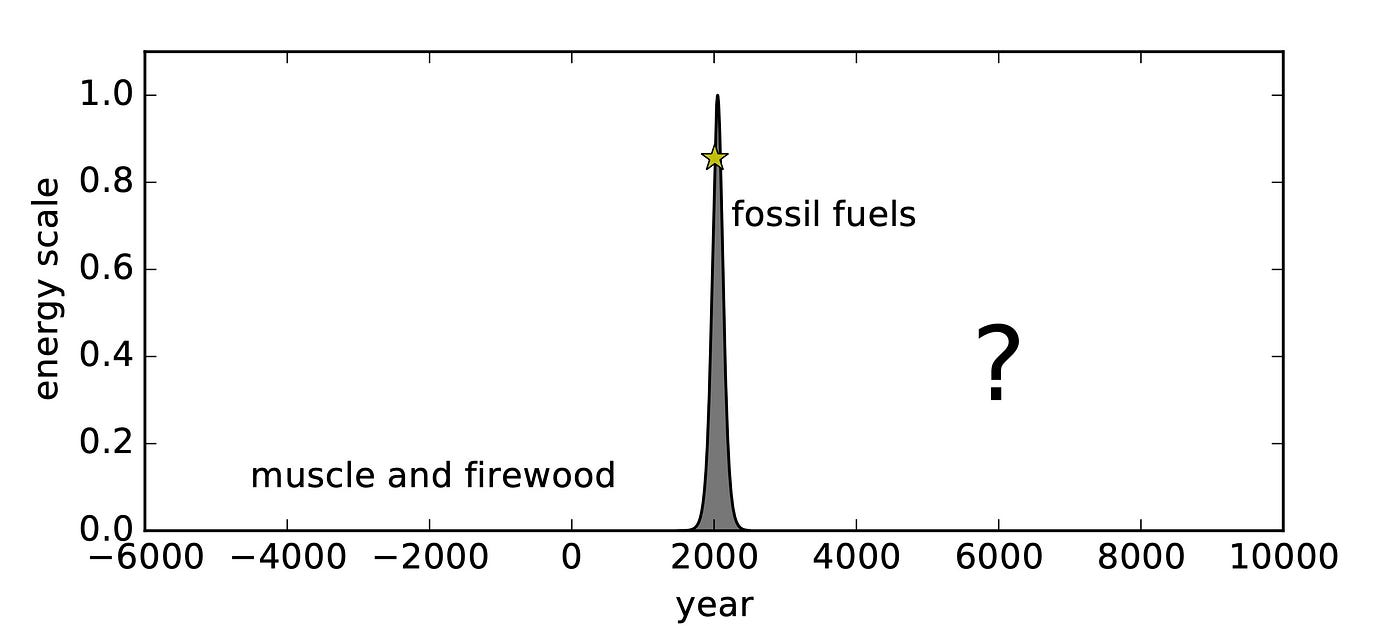
Energy and Human Ambition on a Finite Planet is a fantastic (and free) textbook. It teaches physics in the most fascinating way, describing how, precisely, we’re fucked.
I’ll get to how fossil fuels are bad, but for now I’ll talk about how they’re good.

Fossil fuels are incredibly dense and powerful energy sources. A vial of gasoline the size of a AA battery (7 mL) has enough power to lift a car (1,500 kg) up as high as a house (4 m). Fossil fuels are energy dense enough that they can power rockets to the moon. They have been a miracle for mankind, and a curse to our descendants. But we’ll talk about them later. Right now the getting is good.
Fossil fuels have fueled a flourishing in human travel, technology, science, leisure, and debauchery. My grandfather took a boat to England, and now my wife is able to fly back and forth enough to see the children. It’s wonderful. And also temporary. As Tom Murphy magically writes:
Historical progress can fool us into thinking that we can expect a continued march to better substitutes. Having witnessed a half-dozen rabbits come out of the hat in the example of lighting technology, we are conditioned to believe more are forthcoming. It will be true until it isn’t any more. One way to put it is that 6 rabbits does not imply an infinite number. We should welcome each new rabbit, but not hinge our future on a continual stream of new rabbits.
Fossil fuels, of course, are not infinite. By common definition, they are not renewable. Mathematically, they take 100s of millions of years to form, and we’re simply using it 100,000 times faster than creatures can ever get died and buried. Plus we’re killing all the creatures. Shit is going to run out. We’re already fracking the bottom of the barrel.
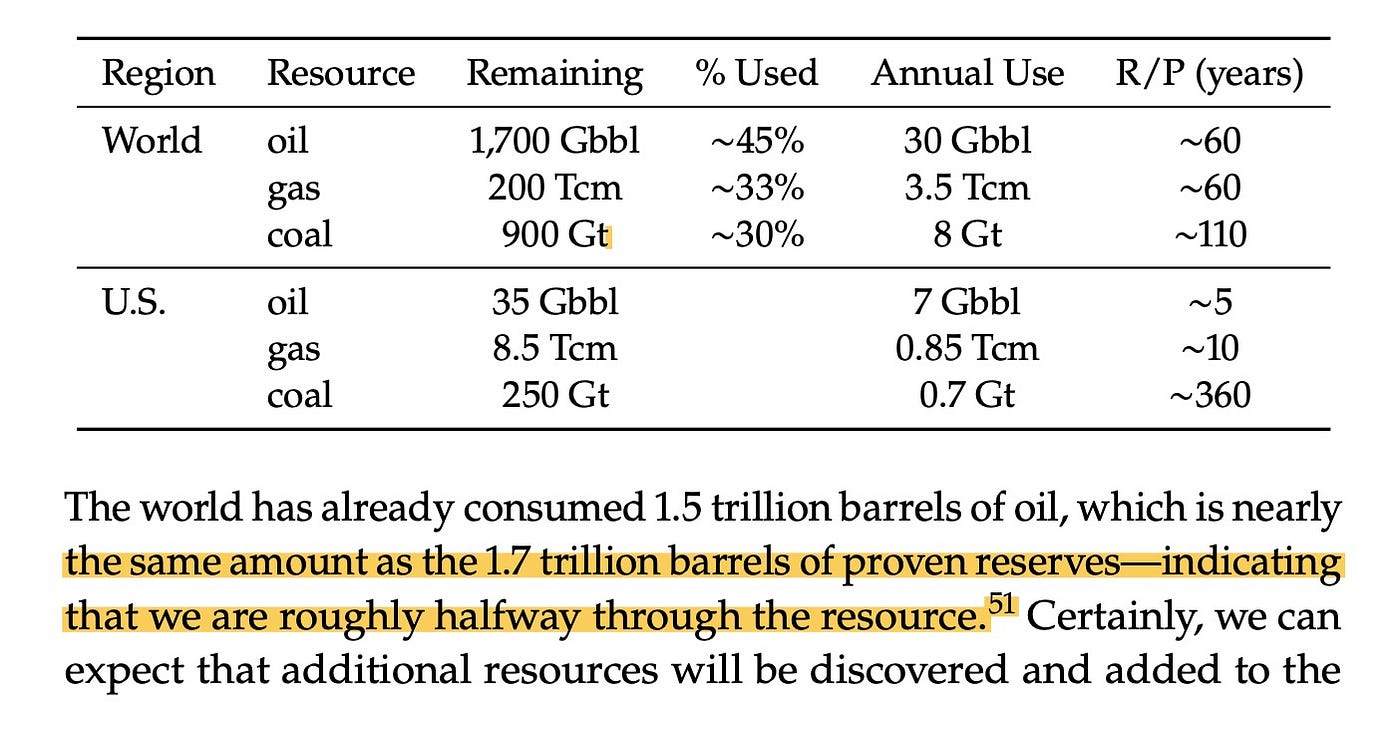
The world will run out of oil and gas in about 60 years. Coal in a 100. They’re’ll be some dregs deep in the bowels of the earth, but it’ll cost more to extract than it’s worth. We’ll be tapped out. The non-renewable resource will not be renewed, and this is happening this century. In my lifetime, if god wills me to hang around. The party’s over. It’ll be a moment like William S. Burroughs described in his heroin fever dream Naked Lunch. “The title means exactly what the words say: naked lunch, a frozen moment when everyone sees what is on the end of every fork.”
By the mathematical estimates of 1.7 trillion barrels (which can be off either way), we’re already 50% done. The gas tank’s not on E, but it’s dipping below the halfway mark. And when it runs out, this whole lifestyle runs out. And that, more than climate change, is the scary part. We have been able to sustain this population and this level of prosperity because we had a massive inheritance from our ancestors, but that is indubitably running out. And we’ll be on our own. And we simply don’t have enough energy to feed this many people and greed this many billionaires. It’s not physically, mathematically possible. So I’ll return to the graph up top:

We are inclined to think a rabbit will be pulled out of the hat that’s as big as fossil fuels were. Which produced shit like electricity, which is godayata magic as we call it down South. It was supposed to be nuclear, it was supposed to be solar, but that’s not going to happen either.
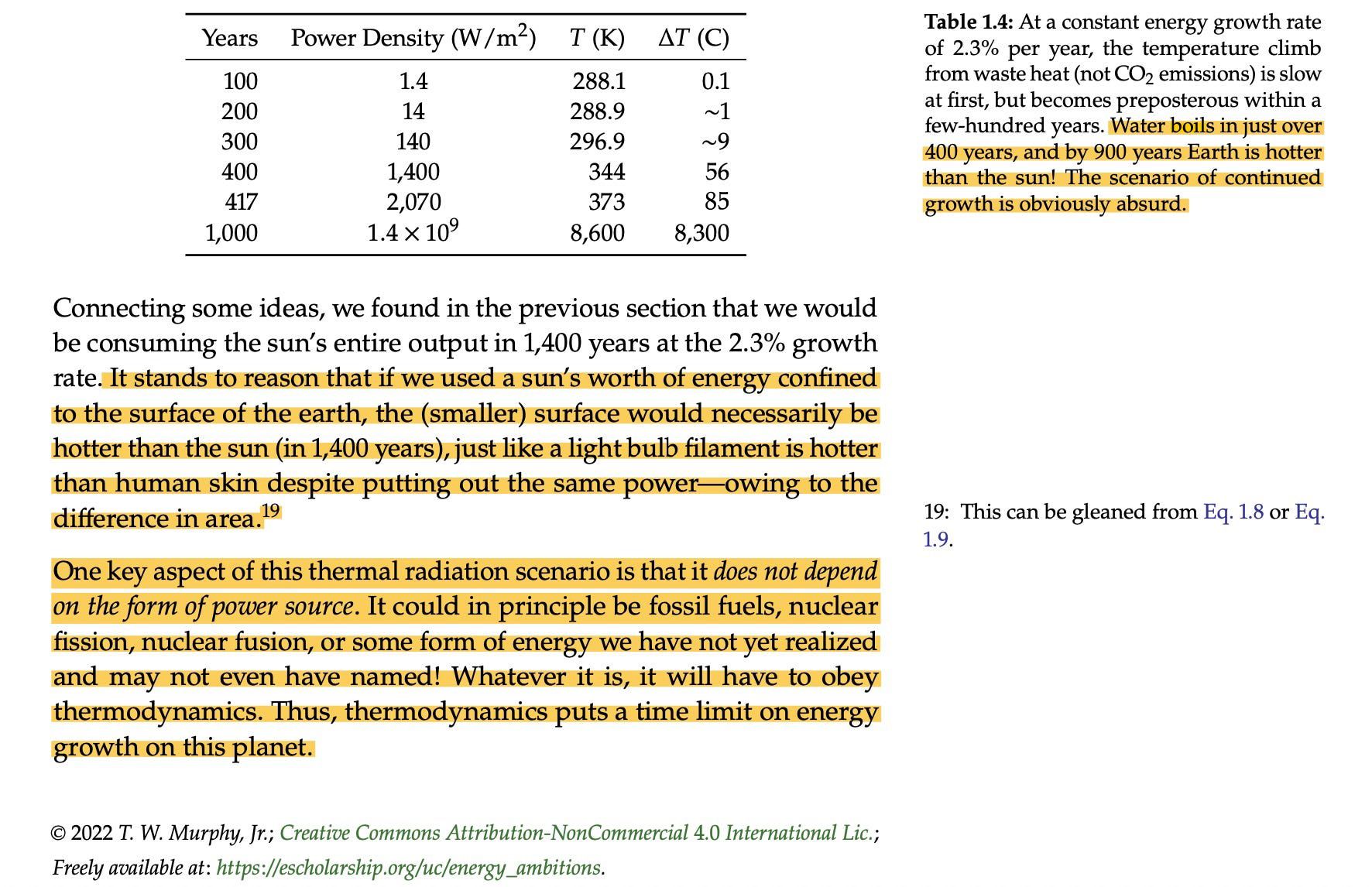
If human energy use keeps growing—as it has our entire lifetimes—the waste heat alone will boil the oceans in 400 years. Regardless of whether it’s renewable or not. It’s not just fossil fuels. Our entire lifestyles are not sustainable. We can’t just keep cruising down the same road in our electric cars. We simply cannot have the entire global population ‘developing’ like Americans. It will boil the fucking oceans. As Murphy says:
The U.S. per-capita energy usage is roughly five times the current global average. To bring 7 billion people to the same standard would require five times the current scale. Completion of a global demographic transition would roughly double the current world population so that the total increase in energy would be a factor of ten. Therefore, if all countries on Earth were to live at a first-world standard, it would require an effective human population of 70 billion people.
And Fidel Castro said it first:
I always cite one example. Imagine if every person in China owned a car, or aspired to own a car, every one of the 1.1 billion people in China. Or that every one of the 800 million people in India wished to own a car — this method, this lifestyle — and that Africa did the same. And that nearly 450 million Latin Americans did the same. How long would oil last? How long would natural gas last? How long would natural resources last? What would be left of the ozone layer? What would be left of oxygen on Earth? What would happen with carbon dioxide? And all these phenomena that are changing the ecology of our world, they are changing Earth, they are making life in our planet more and more difficult all the time.
Back To The Graph

What strikes me about the graph by Tom is, first is that how much it looks like the famous pages by Antoine St-Exupery:
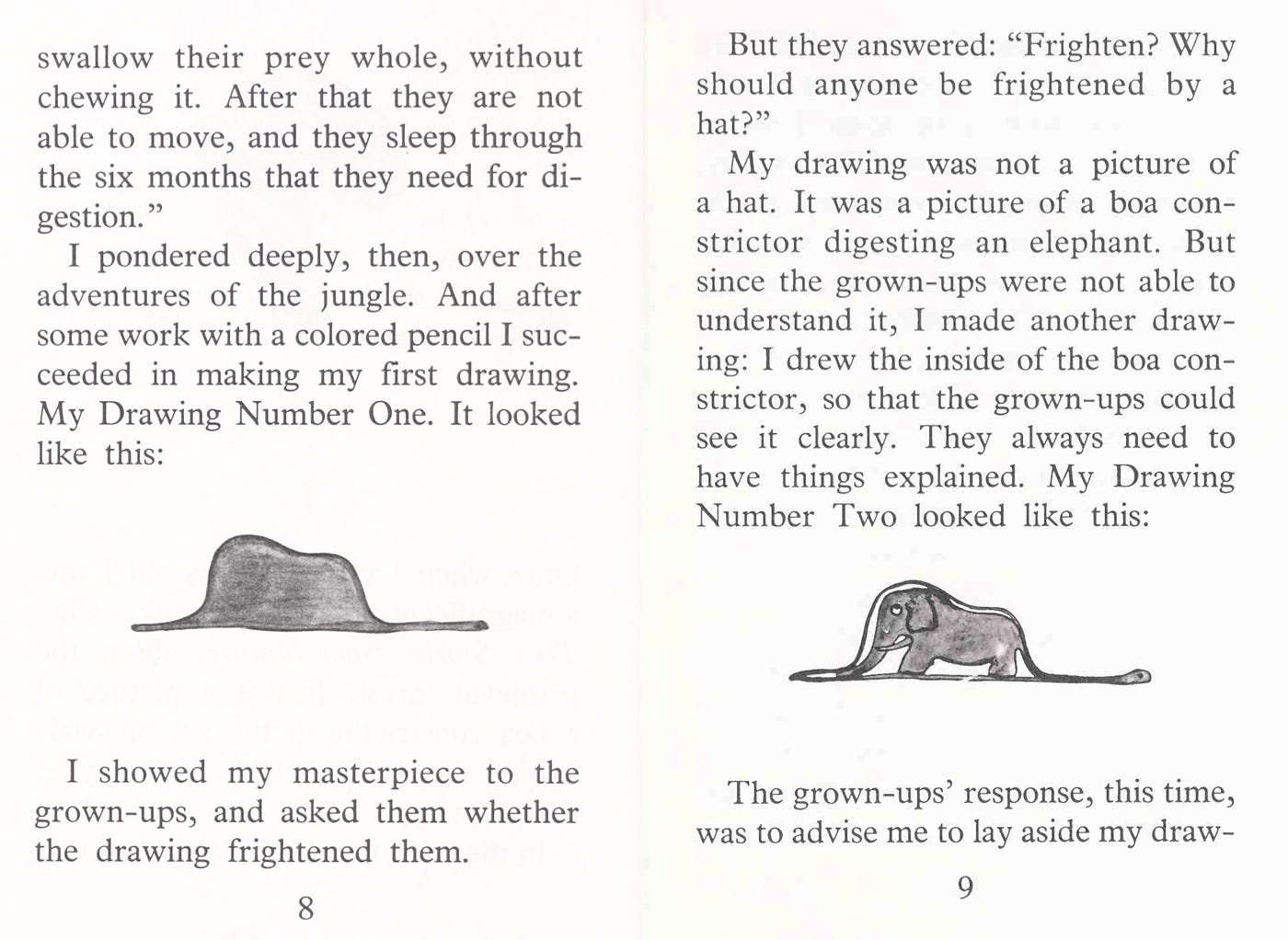
The second is that it’s not the only graph we have like this. We are, as Murphy says, being beaten to death with hockey sticks. What we call progress, growth, and prosperity is going up and to the right.
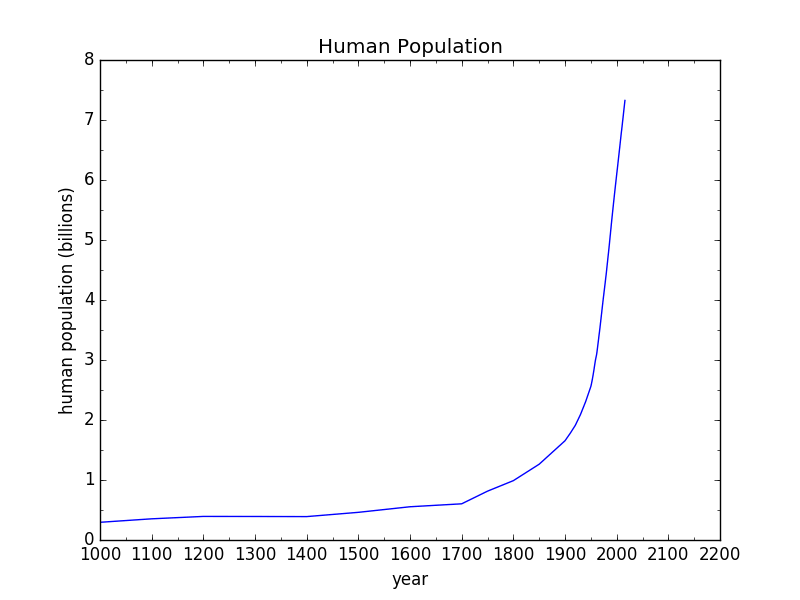
But on the flipside, a lot of irreplaceable stuff is going down. Stuff that’s kinda more important than Birkin bags and F1 races.
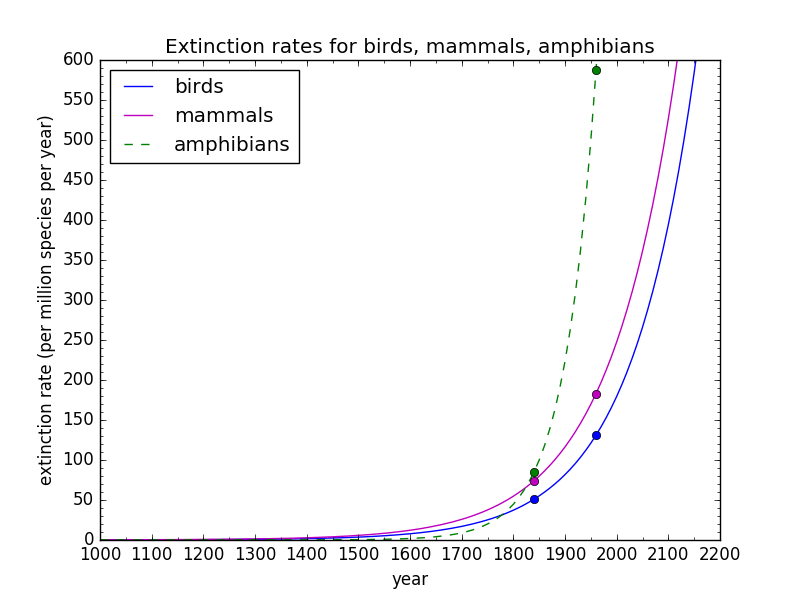
We have grown up on the side of going up, but we will die in the age of coming down. At the end of our lives, our lifestyles will end with us. What goes up must come down. Like good old junkies, we believe that another fix is around the corner. We think it’s renewables, we think it’s green energy, that if we just unite to stop carbon emissions, we can go on like before. But carbon is just one problem. As math tells us, if we keep using more and more energy to power AI and virtual worlds and blast off to space, we’ll boil the oceans even if that energy is renewable. We can’t keep growing forever. On a finite planet, it’s just not physically possible. Tom’s blog is called Do The Math and the math just doesn’t work out.
The great thing about his textbook is that you can do the math yourself. I mean, I can’t, I mostly skip those parts, but it’s a fantastic application of math to real motivating problems. Like the end of the world as we know it. This is treated in the blogosphere as another thing to have an opinion about, but at some point, it’s just a mathematical problem. Not a problem really, because that implies a solution. The answer to the question, can we have endless growth on a finite planet is just no, as much as we try to negotiate the impossible.
Having grown up in an age of perpetual rabbits we believe that new green rabbits will pop out of the hat, but even that leads to the heat death of the Earth if growth continues. We can’t fuck the Earth like rabbits forever. Because we’re not just running out of fossil fuels, we’re running out of insects, we’re running out of amphibians, we’re running out of countless species, of ecosystems, of water, of habitable earth. We have traded all that which is irreplaceable for what is throw-away, and for this our descendants will suffer. But you know, fuck ‘em. By the gods it was a flourishing. We flew like gods before crashing back to the earth we scorched.